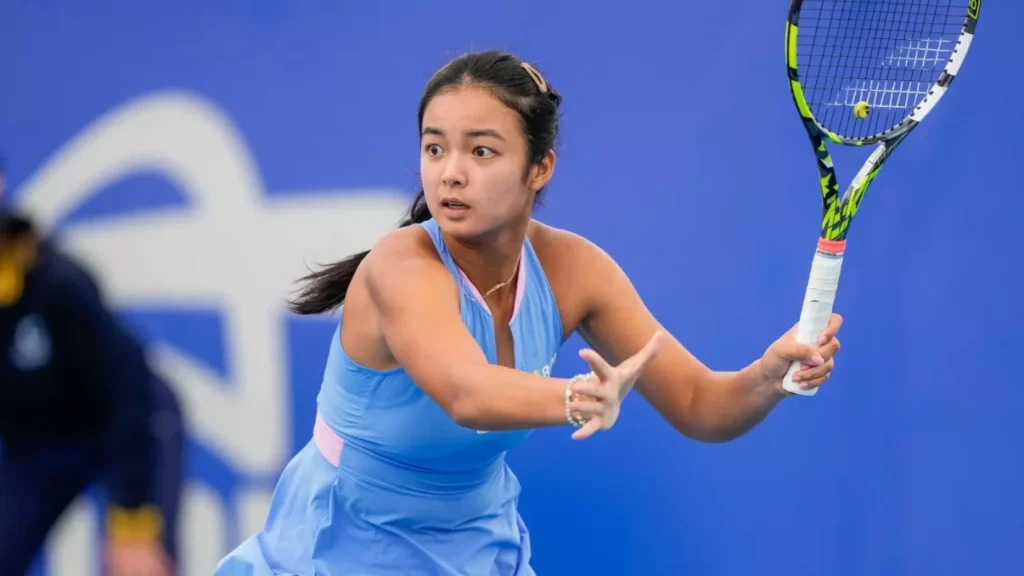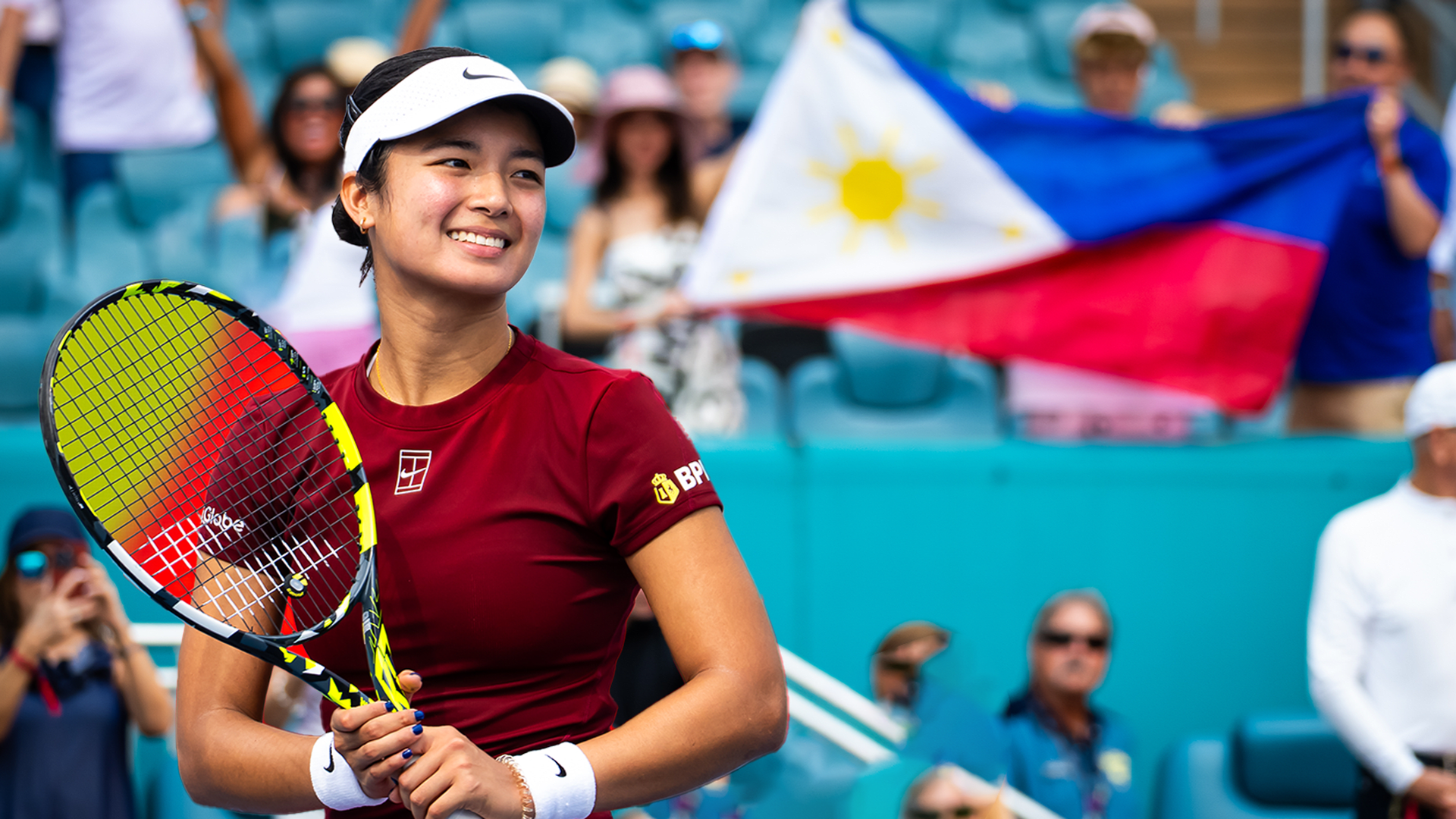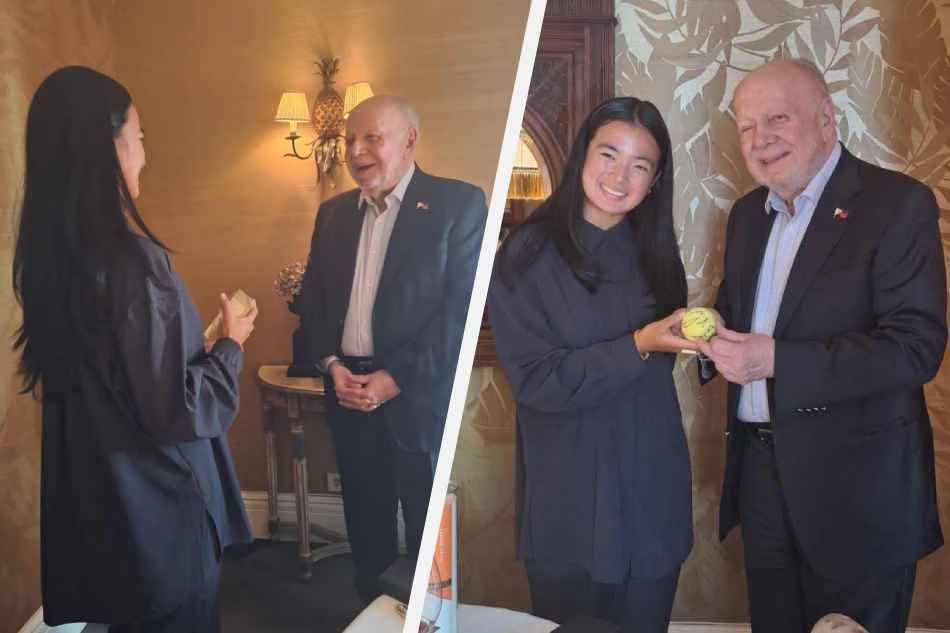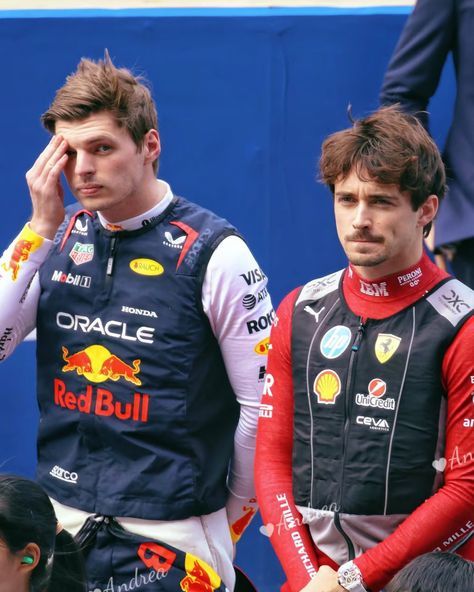As Alexandra Eala prepares to make her highly anticipated debut at the Italian Open in Rome, she’s doing more than just refining her topspin forehand and footwork on clay. The 19-year-old Filipina tennis star is stepping into the spotlight with the kind of confidence, poise, and gratitude that sets her apart—not just as an athlete, but as a cultural ambassador for the Philippines.
In an exclusive conversation ahead of her WTA 1000 debut in Rome, Eala opens up about the unwavering support of Filipino fans, her evolving game, and why she’s embracing comparisons to tennis icon Maria Sharapova.
A Star Rises: From Manila to the Foro Italico
Rome is not just another tournament—it’s a proving ground. The Foro Italico has long been the stage where future champions test their mettle. For Eala, the moment feels both surreal and earned.
“This is a dream I’ve been working toward for years,” Eala says. “Playing in Rome feels like an arrival, but also a beginning.”
Indeed, the journey from the courts of Manila to the red clay of Italy has been marked by tireless work. From her early days at the Rafa Nadal Academy in Mallorca, where she trained alongside top-tier juniors, to capturing the US Open Junior title in 2022, Alexandra Eala has shown time and again that she’s not just playing to participate—she’s playing to win.
Yet, Rome is more than a competitive milestone. It’s a chance to represent something much bigger: a nation hungry for tennis glory.

“I Carry the Flag With Me” 🇵🇭
One thing that distinguishes Eala from her peers is her deep-rooted connection to the Philippines. As the only Filipina currently competing at this level, she understands the weight—and the wonder—of being a national symbol.
“I feel their love in every message, every cheer, even from thousands of miles away,” Eala shares. “When I step on the court, I carry the flag with me.”
Her social media is a testament to that bond. Comments flood in from across the archipelago, from OFWs in Europe to students in Cebu watching her matches during lunch breaks. In return, Eala speaks often in Tagalog in interviews and posts, makes time to sign rackets for young fans, and frequently wears Philippine-themed gear during warmups.
“This is not just my journey—it’s ours,” she adds with a smile.
Sharapova Comparisons: “It’s a Compliment, but I’m Me”
As her game matures, comparisons have naturally followed. Most notable? The one to five-time Grand Slam champion Maria Sharapova.
Observers have pointed to Eala’s on-court elegance, her fierce baseline game, and yes, the focused glare before every serve. When asked about the Sharapova talk, Eala remains humble—but also self-assured.
“It’s a compliment, for sure. Maria was fierce and elegant. But I also want to be known for who I am,” she says. “I think we both bring intensity and style, but I’m creating something different—a Filipina version of greatness.”
That distinction matters. While Sharapova was molded in the Russian-American system, Eala’s path weaves together cultures and continents. Her flair reflects Southeast Asian warmth fused with European grit. There’s no carbon copy here—just an evolving original.
Clay Season Confidence
Many pundits expected Eala’s breakthrough to come on hard courts, where her speed and power shine. But over the past 12 months, her results on clay have told a different story.
Last year, she made the semifinals in several ITF clay events and pushed top-100 players deep into deciding sets.
“It took a while to understand clay,” Eala admits. “But once I did, it actually helped my game grow. It teaches you patience, balance, and creativity.”
Her coaches echo that sentiment, pointing to her improved point construction and willingness to mix slices with deep forehand drives. Rome, with its slower surface and demanding rallies, may now be an ideal stage.
Eala has also put extra emphasis on fitness in the offseason, something crucial for long clay matches. “We worked on endurance and mental sharpness. You need both to survive in Rome.”
Fashion & Identity: “I Want to Represent the Philippines in Style”
Aside from her tennis, Eala’s fashion choices have also drawn buzz. Whether it’s her custom-designed kits with subtle nods to the Philippine sun or braids with beads representing native culture, Eala is using every inch of her presence to make a statement.
“I want to represent the Philippines in style, literally,” she laughs. “We’re creative, we’re vibrant, and I want that to show.”
It’s not lost on young girls in the Philippines, many of whom now see Eala as a fashion icon as much as an athletic role model.
“When I was younger, there weren’t many athletes I saw on TV who looked like me. If I can be that for someone else now, that’s a gift.”
Looking Ahead: Not Just a Debut—A Statement
When the draw for Rome is released, eyes will turn to see who Eala will face in the first round. But regardless of the opponent, one thing is clear—Alexandra Eala is not in Rome to just experience the moment. She’s there to shape it.
“I’m here to compete,” she says firmly. “The crowd, the history, the expectations—they’re all fuel.”
Her goal? Make the second week. If she does, she’ll be the first Filipina to reach that stage of a WTA 1000 event.
But even if she doesn’t, her journey is far from measured by wins alone. Every serve, every fist-pump, every moment under the Roman sun is an invitation to dream—for herself and for the millions watching back home.

Final Rally: More Than Tennis
Alexandra Eala’s Rome debut is more than a tennis milestone—it’s a cultural moment.
It’s a Filipina walking onto one of the sport’s most sacred stages, not just with rackets and gear, but with history, hope, and heart. It’s a reminder that greatness doesn’t need a roadmap—it just needs belief, hard work, and a flag to carry.
And as the red clay of Rome meets the rhythm of a rising star, there’s no doubt: the world is watching, and Alexandra Eala is ready.


